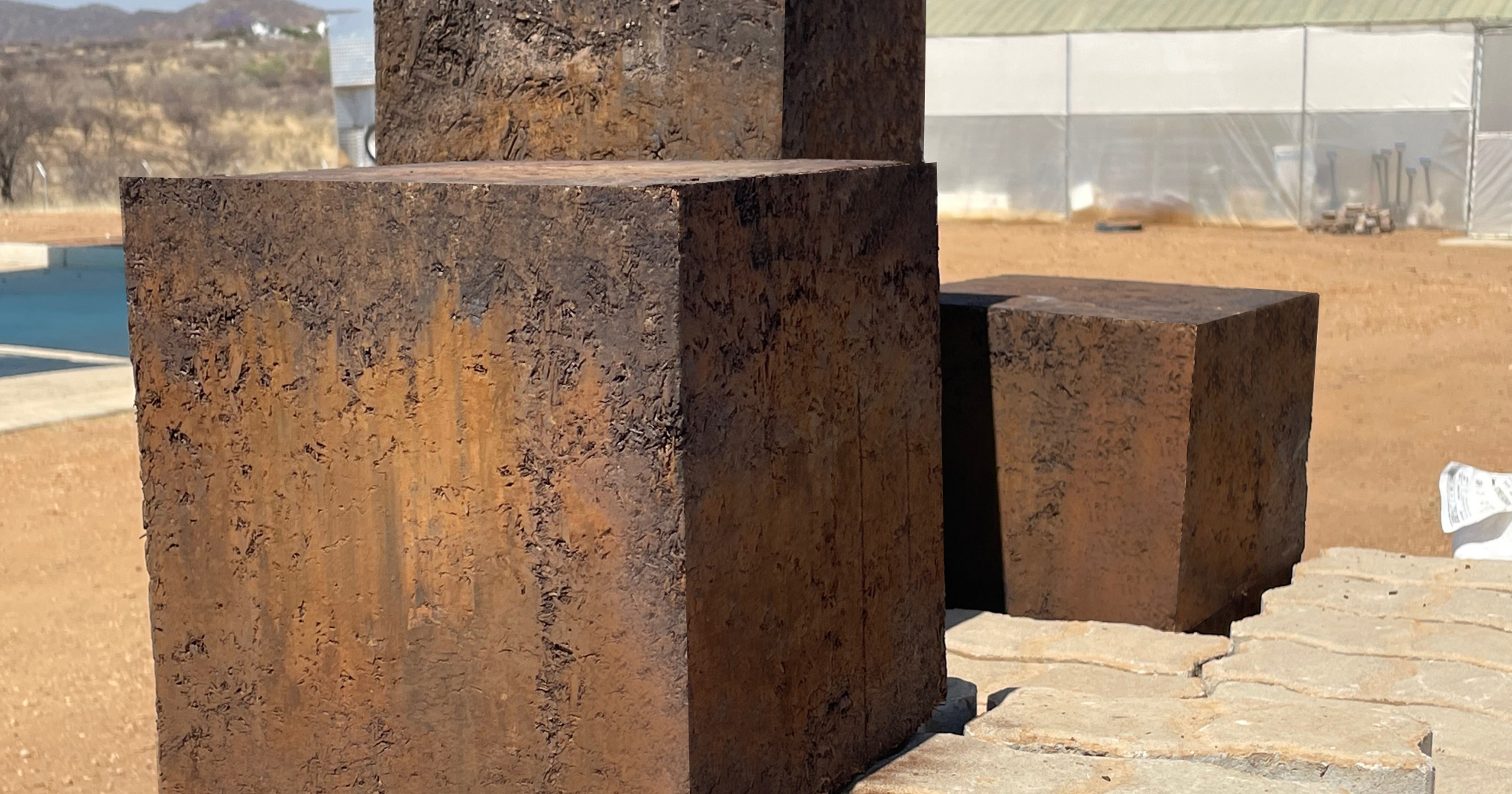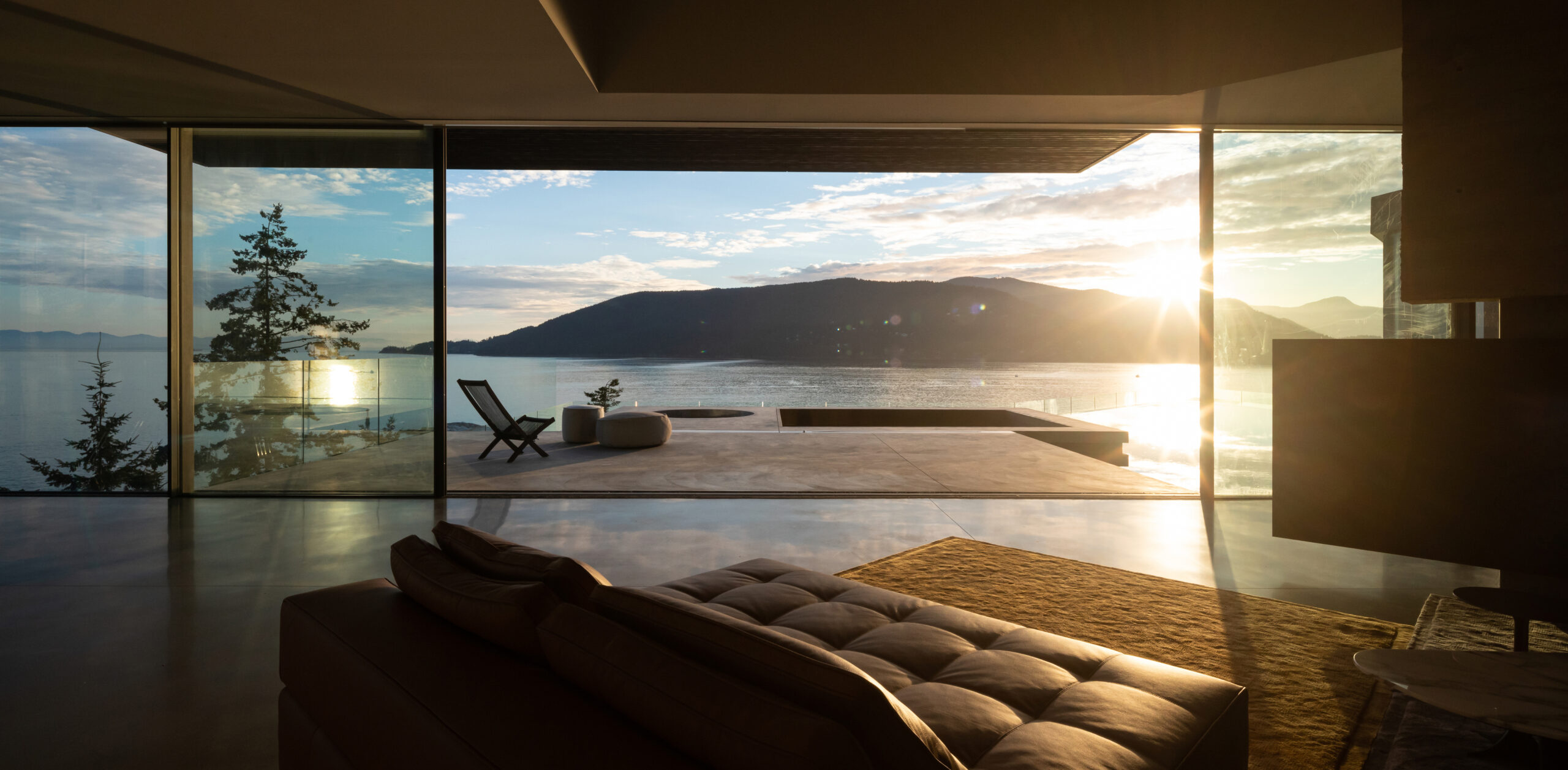Architizer's new image-heavy daily newsletter, The Plug, is easy on the eyes, giving readers a quick jolt of inspiration to supercharge their days. Plug in to the latest design discussions by subscribing.
Since 1988 and thanks to physicist and unashamed mathematics lover Larry Shaw, numerates and math aficionados, scientists, engineers, artists and architects from around the world raise a slice and celebrate on March 14th. You may or may not know that the 14th of March 1879 was Albert Einstein’s birthday, and indeed, thanks to the influential physicist’s contribution to the world, many would agree that it is a day that should be recognized with vigor and enthusiasm. However, March 14th is not celebrated by the science and engineering communities as a memorial for Albert Einstein; Shaw’s reasoning for observing the day was somewhat unsurprisingly more numbers-based. Each year, March 14th (03/14) is celebrated as Pi Day (π = 3.14).
On this day annually, we appreciate the value of the seemingly never-ending number that has gone on (and on) to help us invent, design, engineer and construct since the days of Archimedes (often literally by eating a slice of pie.) Why limit our celebrations to one day a year? Architects, after all, rely on this calculation year-round. We’re celebrating our circumference-calculating comrade by looking at some incredible feats of circular architecture that couldn’t have existed without our good pal Pi.
Casa de Baño
By Robert Hutchison Architecture and JSa Arquitectura, Temascaltepec de González, Mexico
Popular Choice, 10th Annual A+Awards, Architecture +Small Projects 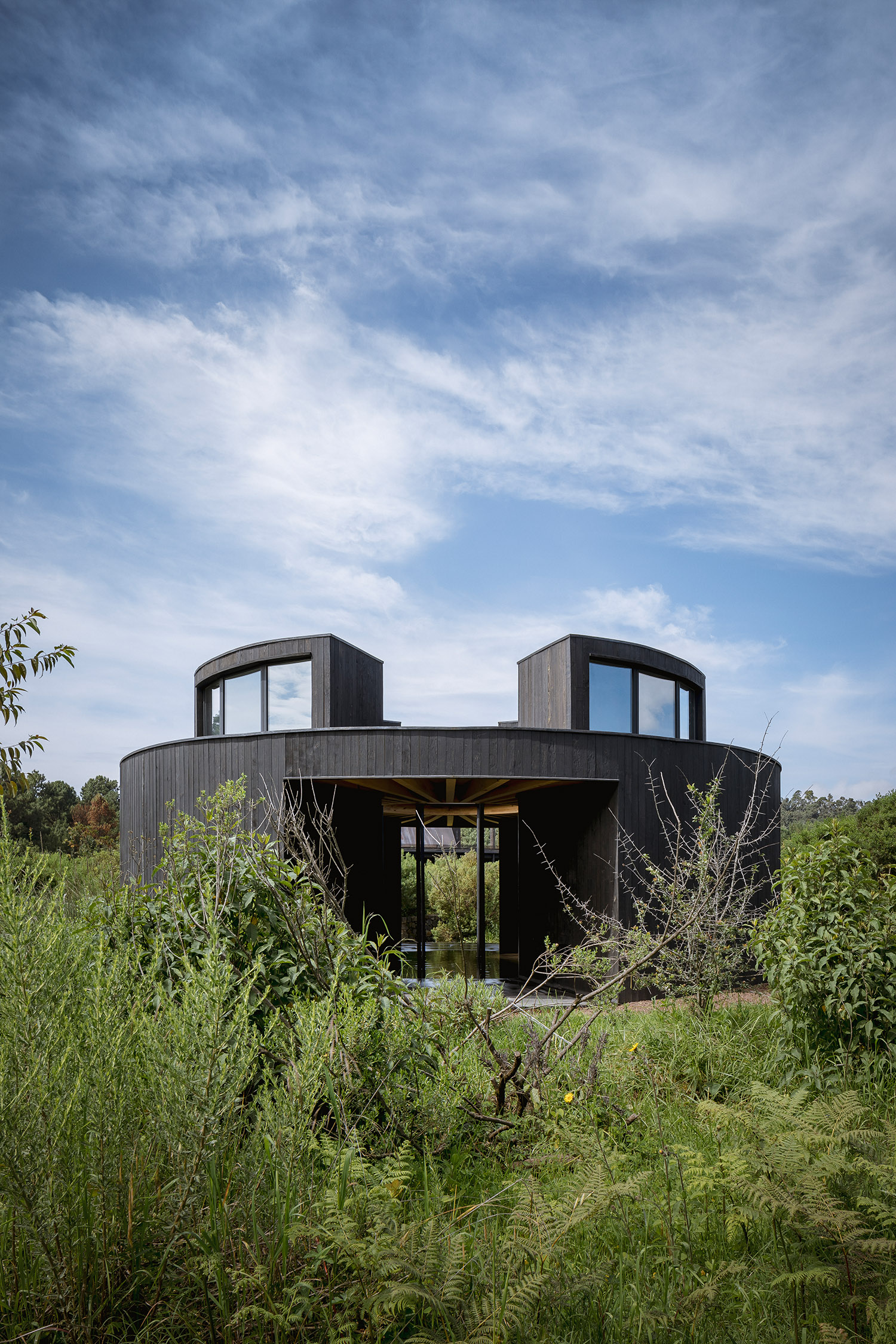
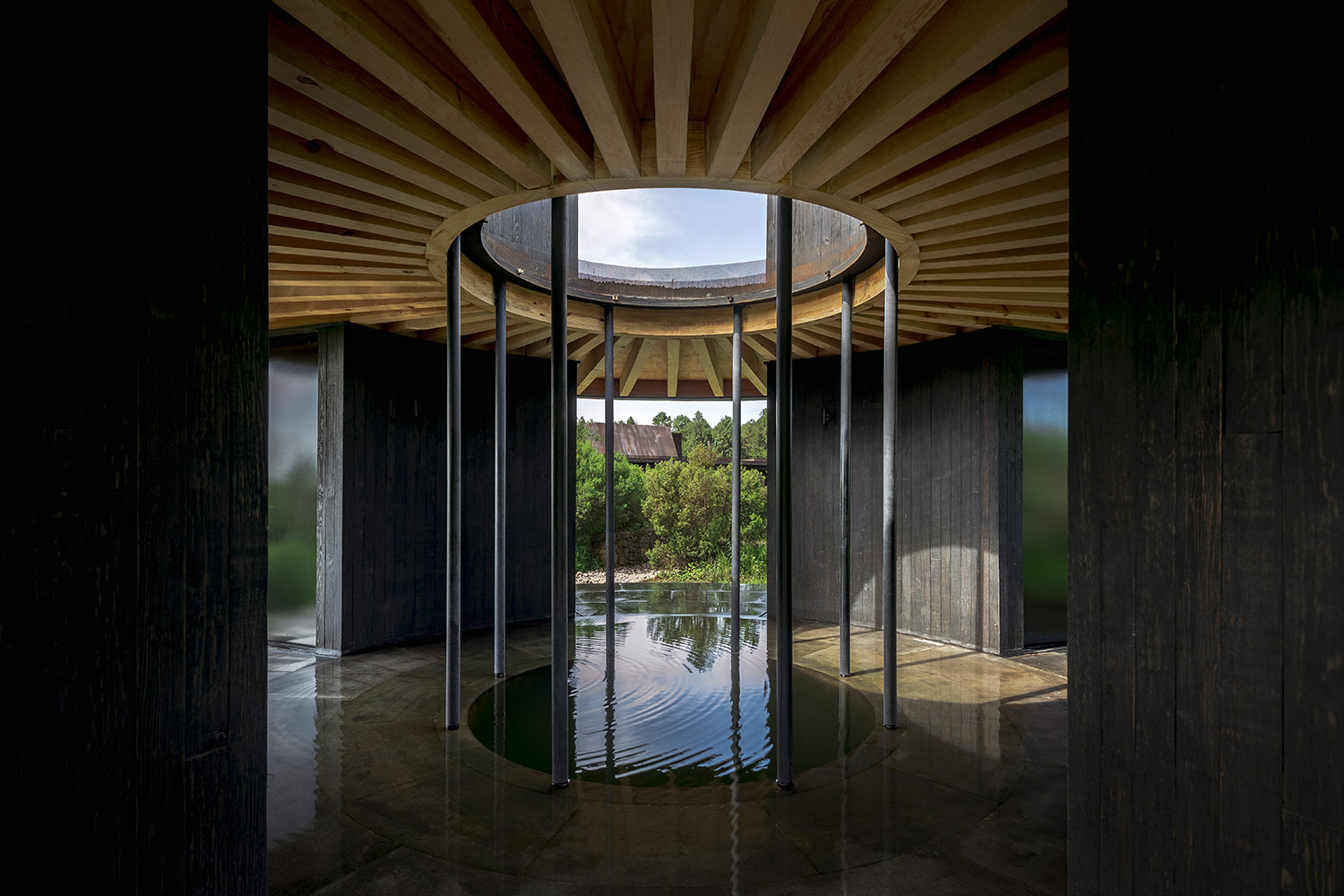
Casa de Baño by Robert Hutchison Architecture and JSa Arquitectura, Temascaltepec de González, Mexico. Photographs by Cesar Bejar
Casa de Baño designed by Robert Hutchison Architecture and JSa Arquitectura is a 700-square-foot bathhouse that sits as part of an off-the-grid, water-autonomous retreat that features a detached residence and artist studio. The bathhouse integrates perfectly into the natural surroundings with its stained vertical tongue-and-groove pine siding and local recinto volcanic stone floors. Its circular design houses four bathing activities, including a hot bath, sauna, steam shower, and washroom, all encircling a central cold plunge pool open to the sky. With its integrated rainwater harvesting system and on-site water treatment and storage system, the bathhouse speaks to the retreat’s commitment to designing regeneratively with water. Casa de Baño is a functional monument to this life-giving resource, offering a poetic dialogue with the experiential qualities of water.
Yinchuan Sunac City Exhibition Center
By Arch-Age-Design(AAD), Yinchuan, China
Popular Choice, 2021 A+Awards, Showrooms
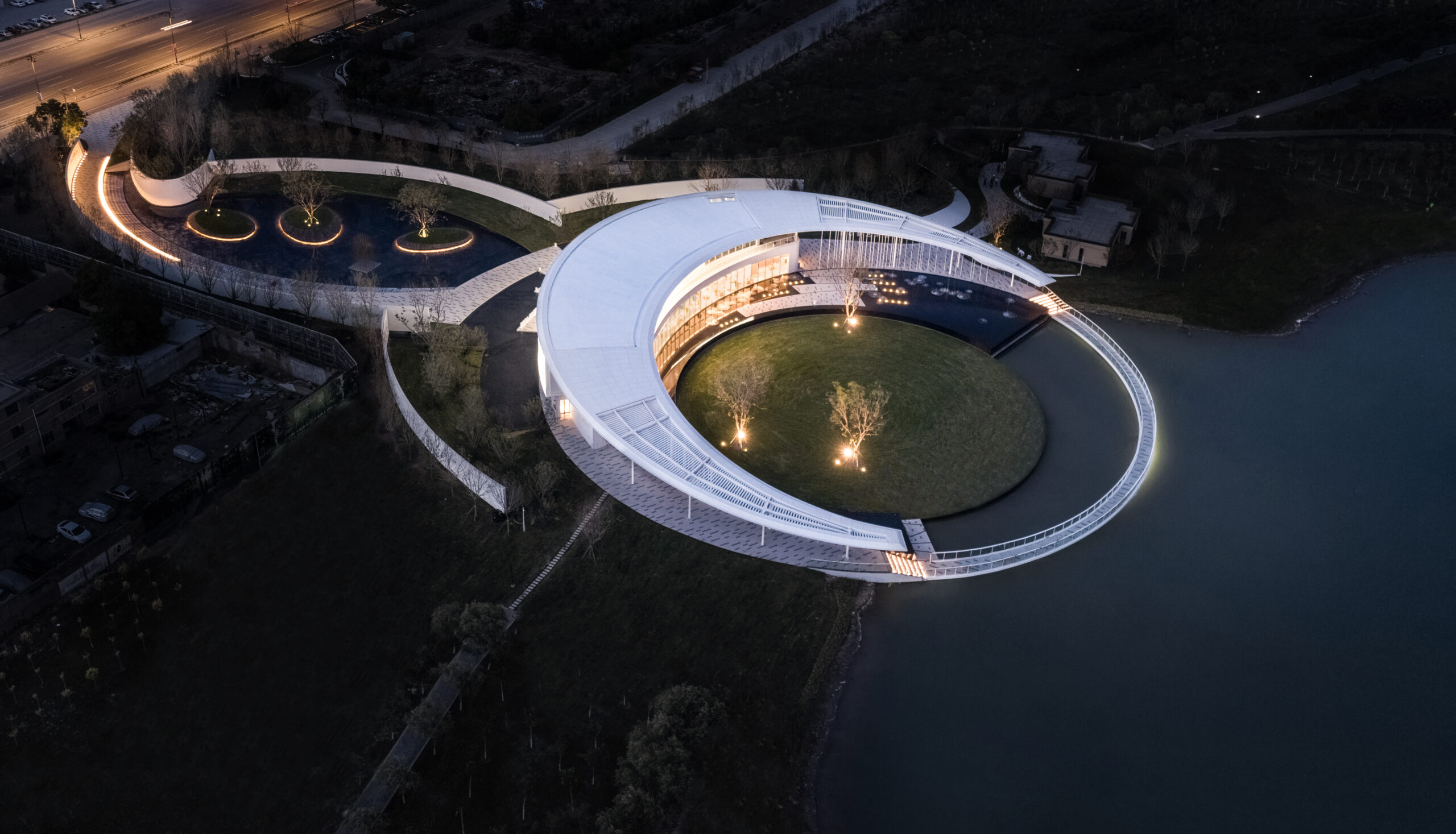
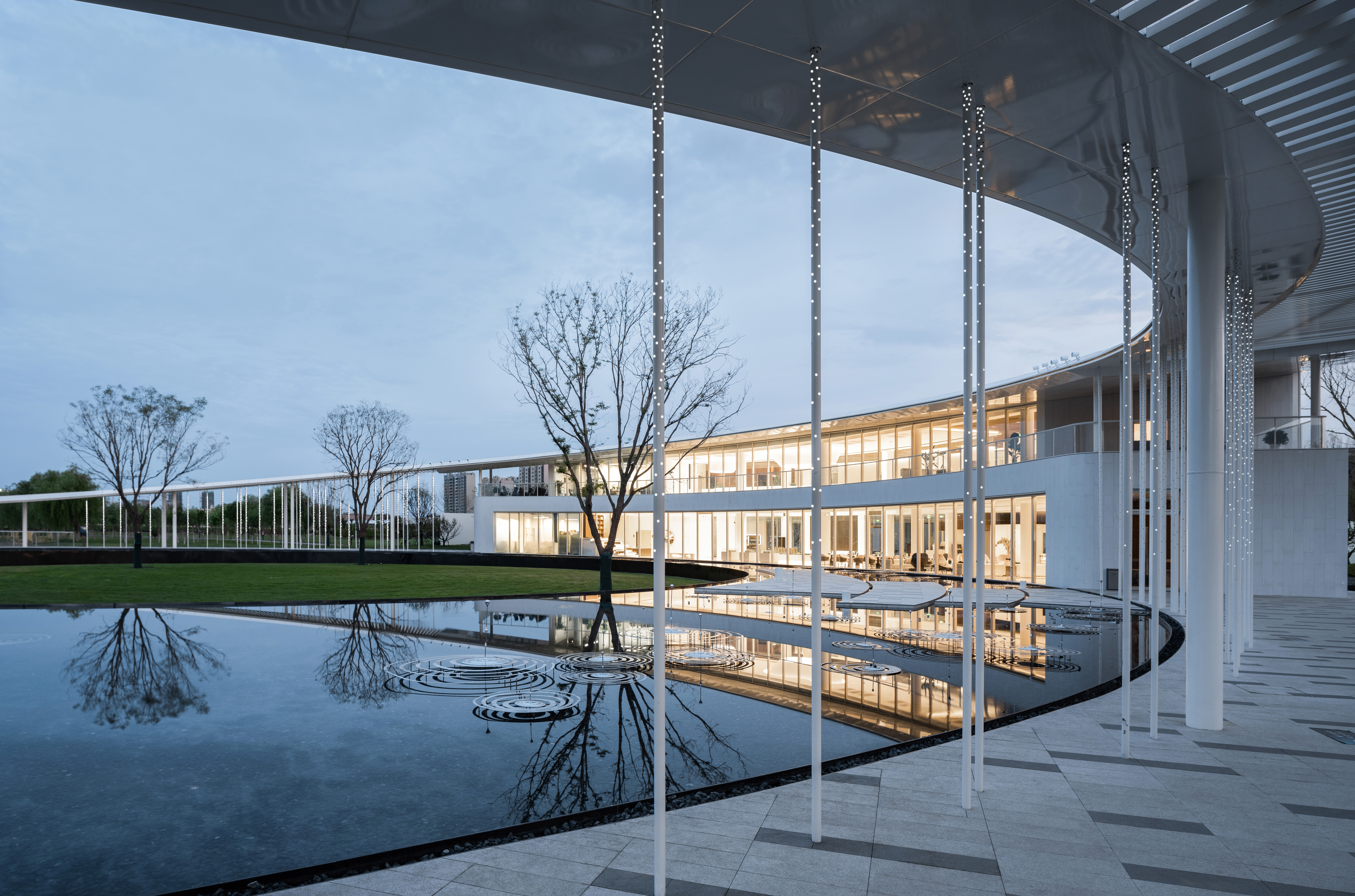
Yinchuan Sunac City Exhibition Center by Arch-Age-Design(AAD), Yinchuan, China Photographs by SHRIMP STUDIO
Situated at the entrance of Gedi Lake Park, Arch-Age-Design (AAD) created a stunning landmark building, the Yinchuan Sunac City Exhibition Center in China. The building beautifully blends modern minimalism with traditional Chinese culture alongside the Silk Road heritage of the area.
The building’s circular blocks and curved elements seamlessly integrate with the surrounding environment. The half-moon-shaped roof extends towards the lake and is supported by slender perforated columns, giving the building a sense of weightlessness. The transparent glass curtain wall blurs the boundary between the interior and exterior spaces, allowing visitors to interact with nature harmoniously and perceive the changes of seasons.
Inside, the irregular arc-shaped walls support the structure and connect different functional spaces, increasing spatial variability. Throughout, the building’s design equally considers the ecological resources of Gedi Lake, perfectly integrating the architecture with the ecological park planning.
Kagi Island Resort
By Yuji Yamazaki Architecture, Kaafu Atoll, Maldives


Kagi Island Resort by Yuji Yamazaki Architecture, Kaafu Atoll, Maldives Photographs by Kagi Maldives Spa Island
In the idyllic Kaafu Atoll of the Maldives sits Kagi Island Resort, an architectural gem designed by Yuji Yamazaki Architecture. The resort provides a unique experience that combines Maldivian beauty with guests’ well-being. The masterplan features forty water villas and ten beach villas, each with a front deck and pool, maximizing the breathtaking views of the Indian ocean. The spa complex, one of the largest in the country, offers wellness facilities like treatment rooms, lounges, a gym, a yoga studio and steam rooms. The restaurant complex showcases an herb garden and offers seating both indoors and outdoors. The resort’s design promotes privacy for individuals while facilitating socialization in a relaxed, well-considered environment.
Kakapo Creek Children’s Garden
By Smith Architects, Mairangi Bay, Auckland, New Zealand 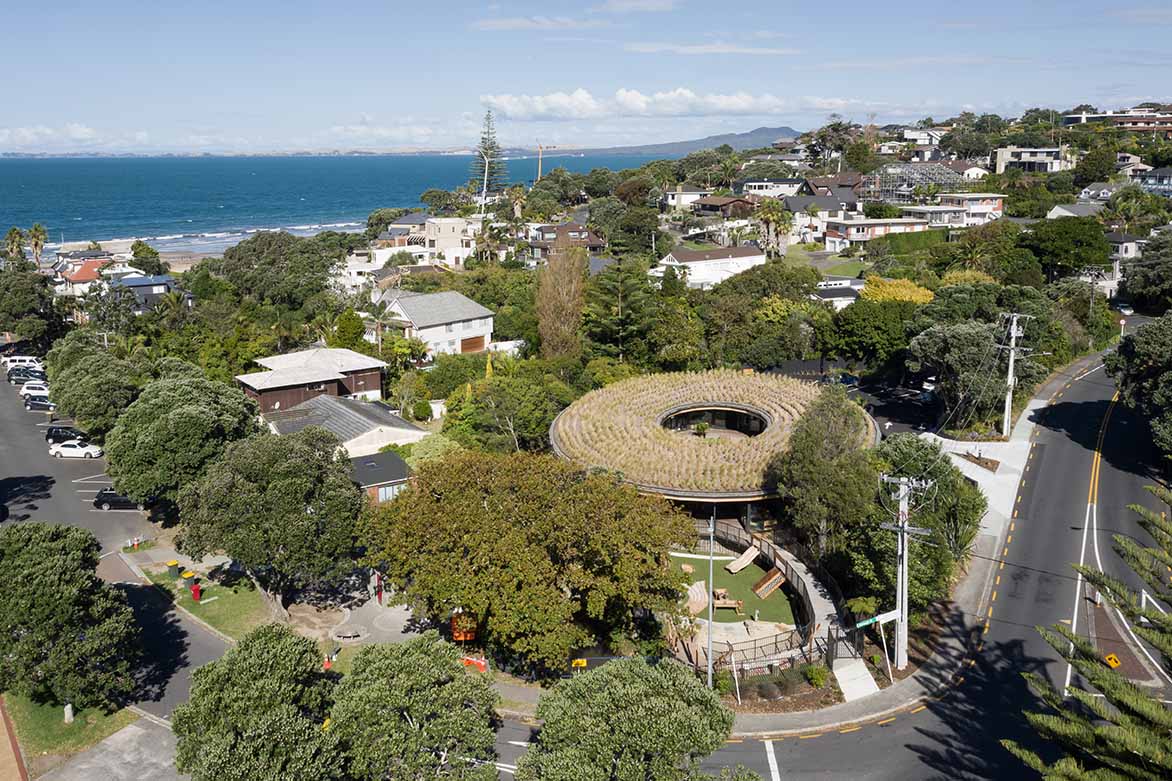
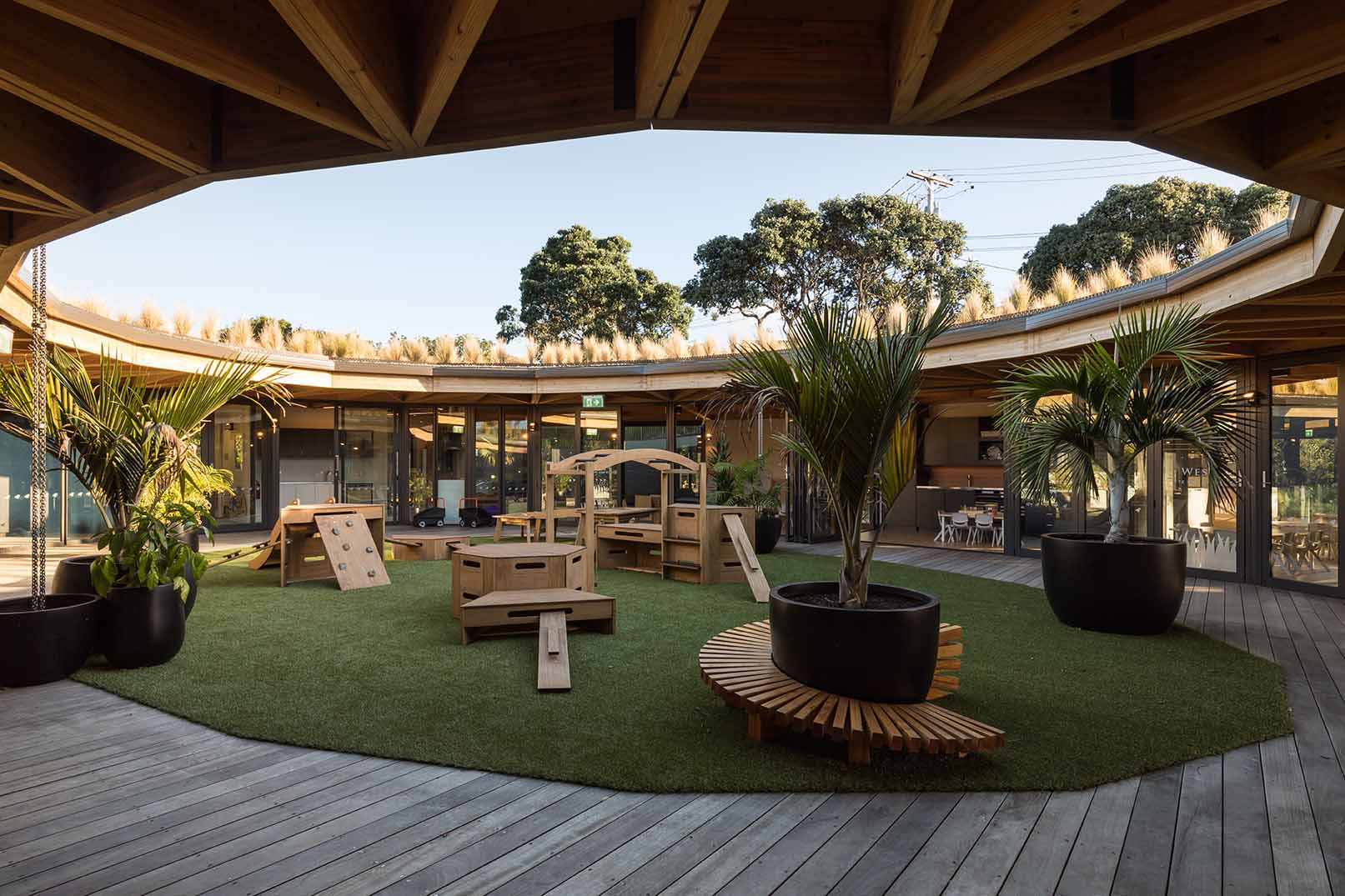
Kakapo Creek Children’s Garden by Smith Architects, Mairangi Bay, Auckland, New Zealand Photographs by Mark Scowen
The Kakapo Creek Children’s Garden in Mairangi Bay, Auckland is a remarkable early learning center designed by Smith Architects. The circular building is inspired by the Maori concept of Nga Hau E Wha, representing the four winds as a meeting place for all. The design allows for a central meeting space surrounded by four classrooms that encourage children to connect with nature and each other.
Sustainability and well-being are integral to the design, with natural ventilation, heating, and cooling provided by hidden electrical heat pumps. Extensive glazing maximizes daylight, while a green roof enhances biodiversity and reduces rainwater runoff by over 50%. The building’s careful placement allowed the preservation of most trees, and recycled materials were used in the playground finishes. The Kakapo Creek Children’s Garden blends seamlessly into the natural surroundings and provides a nurturing environment for up to 100 children.
National Aviation Museum of Korea
By HAEAHN Architecture, Seoul, South Korea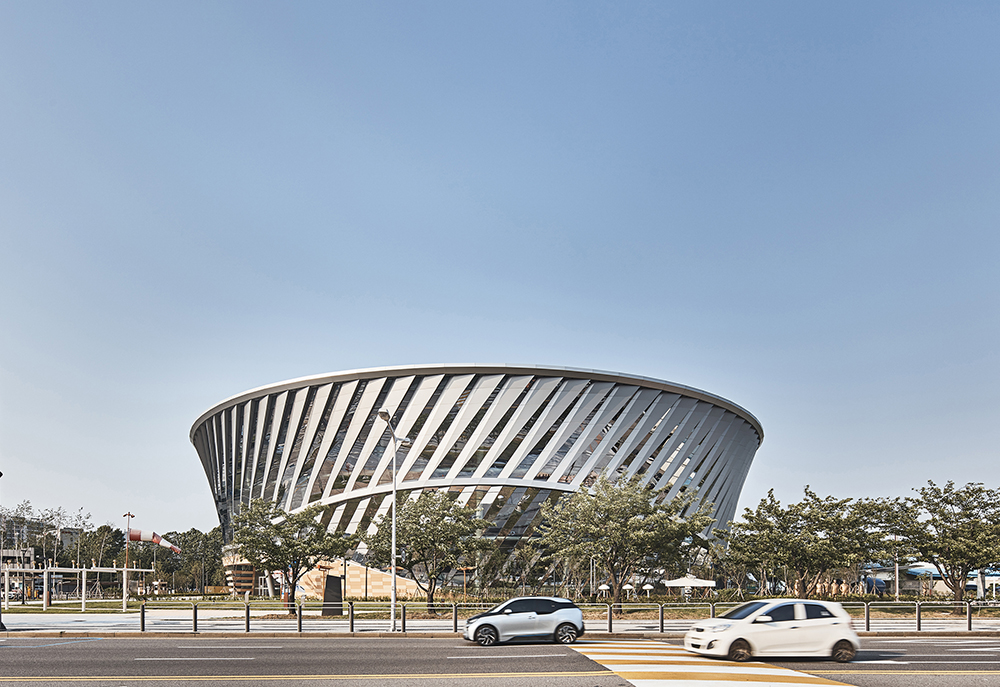
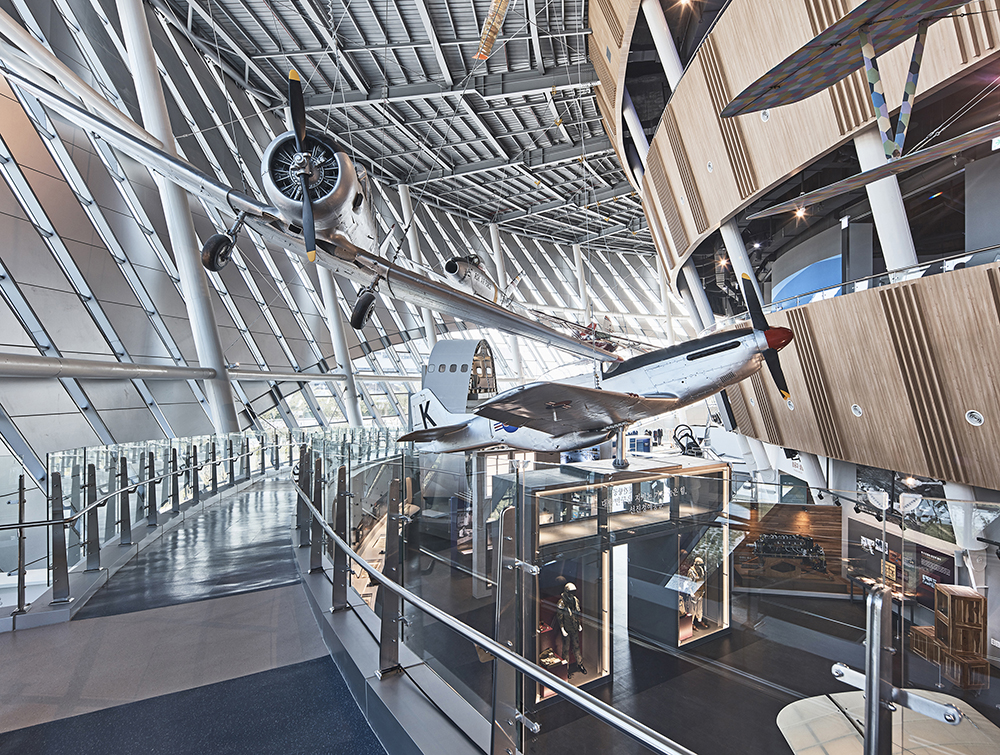
National Aviation Museum of Korea by HAEAHN Architecture, Seoul, South Korea. Photographs by Namsun Lee
HAEAHN Architecture’s National Aviation Museum of Korea is an outstanding work of aviation architecture situated at Gimpo Airport. The museum reflects science, freedom and adventure, embodied by the “Air Turbine” symbol, “Air Show” aviation gallery, and “Air Walk” exhibition walkway. The circular layout of the site ensures harmony with the environment, providing frontality in all directions.
The three-floor void exhibition space incorporates outdoor exhibitions through the transparent façade. The eco-friendly air turbine’s interior includes a spiral exhibition space that guides visitors to walk naturally through the planes on the ceiling. The National Aviation Museum of Korea is an outstanding example of circular architecture that exudes the excitement and grandeur of the aviation industry.
Vortex
By IttenBrechbühl, Chavannes-près-Renens, Switzerland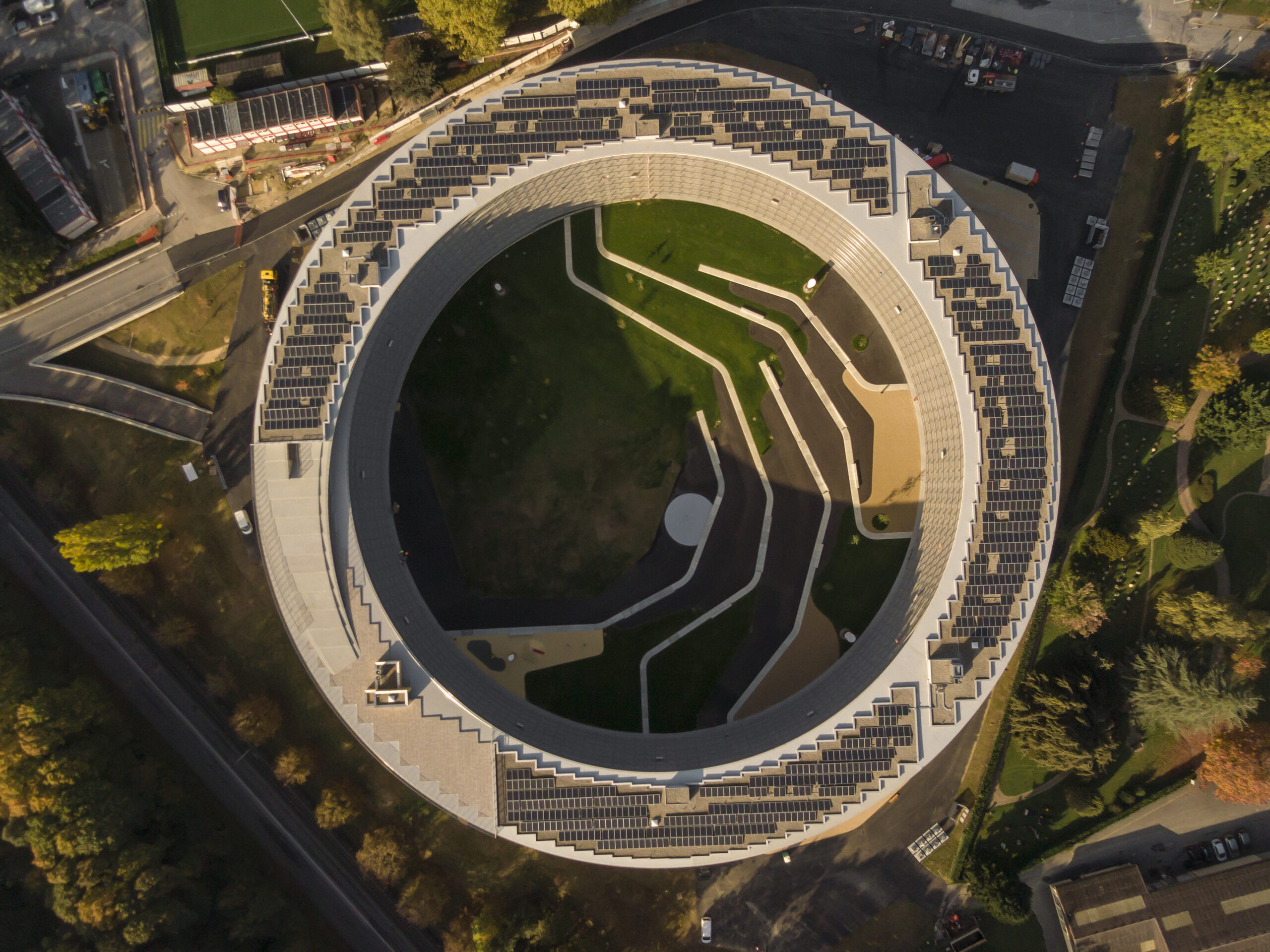
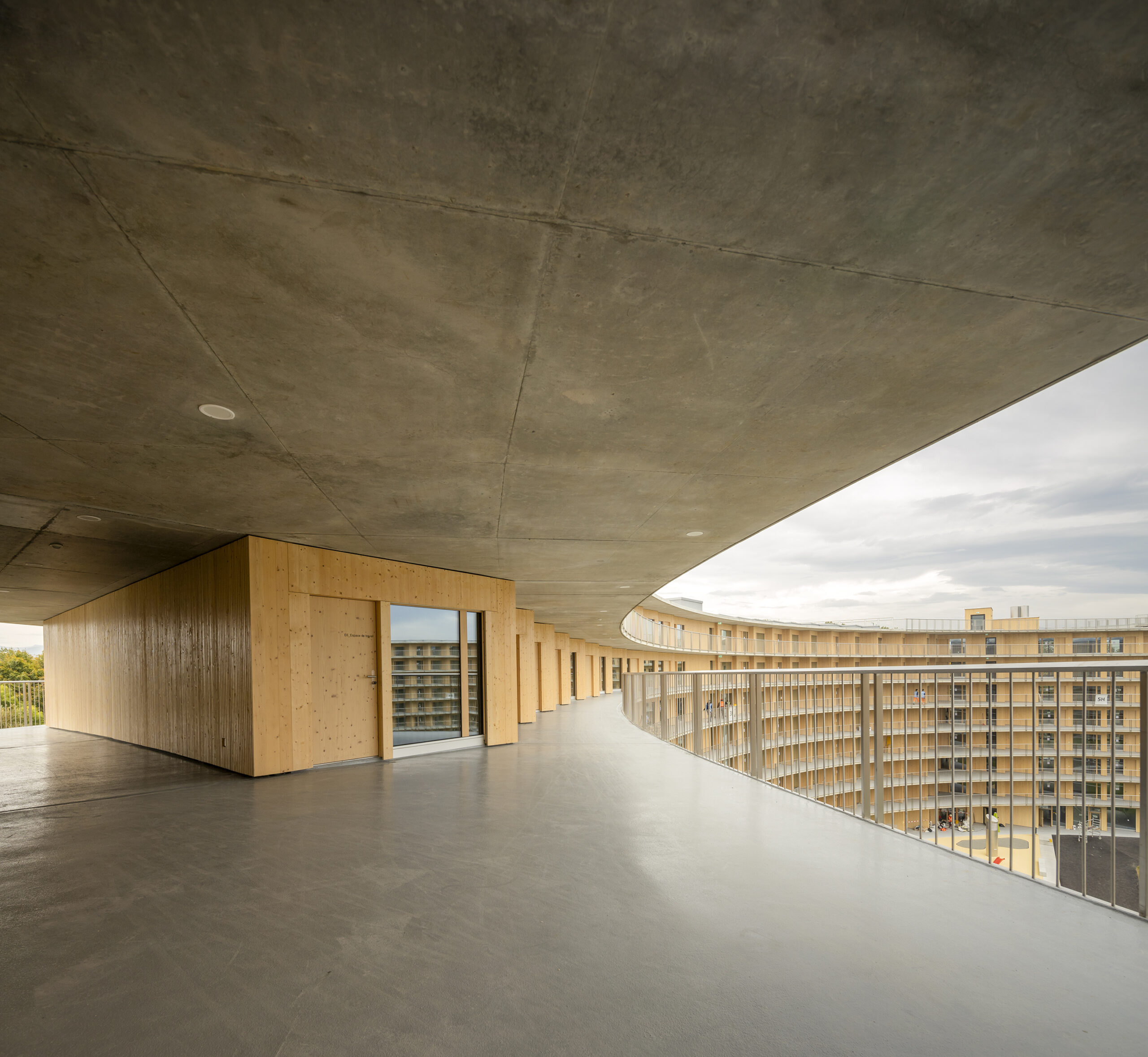
Vortex by IttenBrechbühl, Chavannes-près-Renens, Switzerland. Photographs by Fernando Guerra | FG+SG
The Vortex complex, located on the outskirts of the University of Lausanne in Chavannes-près-Renens, is a striking building designed by Dürig AG, and brought to life by IttenBrechbühl and Losinger Marazzi. It houses almost 1,000 students and academic guests and was completed just in time for the Youth Olympic Games in January 2020. The building’s signature circular design and scale create a landmark on the regional skyline, providing a vital link between the city and its universities.
Individual housing units arrayed along a spiral ramp facilitate community engagement between residents. The complex includes a nursery, restaurant, and rooftop bar that boasts unparalleled views of Lake Geneva and the surrounding countryside. The structure features a range of sustainable design features, including integrated solar panels and clean energy systems in the roof structure. The building’s consistent structural concept from floor to floor, above ground level, made it a highly efficient and cost-effective construction project.
University of British Columbia Arts Student Center
By Leckie Studio Architecture + Design, Vancouver, Canada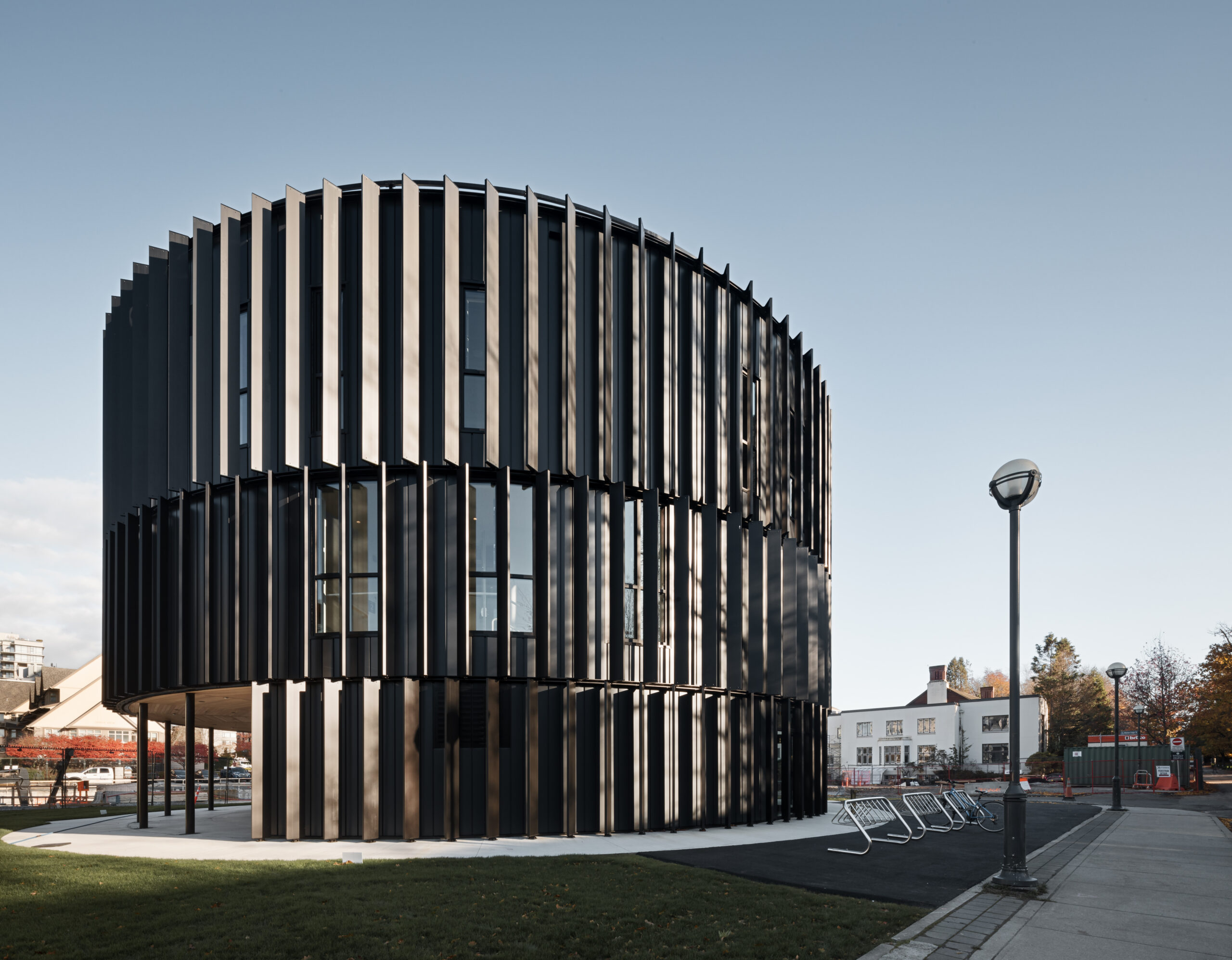
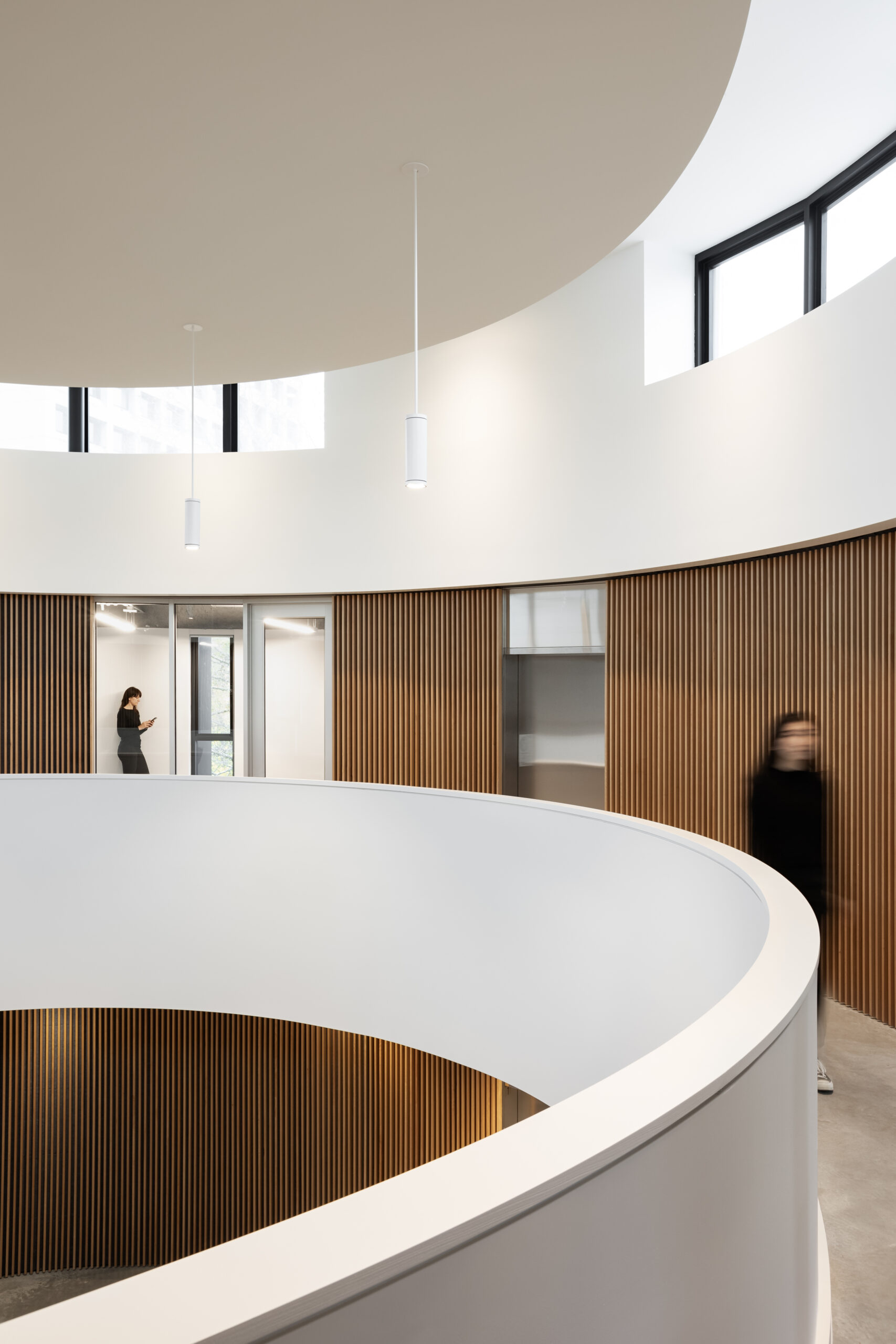
University of British Columbia Arts Student Center by Leckie Studio Architecture + Design, Vancouver, Canada. Photographs by Ema Peter
The University of British Columbia Arts Student Center is an innovative and striking building set to become a social and academic activity hub for the university’s Arts students. Designed by Leckie Studio Architecture + Design in Vancouver, Canada, the building boasts a compact three-story design with a radial plan that responds perfectly to its context. The ground floor lounge area is a seamless extension of the public realm, providing a highly transparent and inviting space. As you move up through the building, the spaces become increasingly private, culminating in the top floor, which houses administration offices, study rooms and quiet study rooms.
The building envelope is layered with vertical louvers that provide privacy while allowing ample natural light and ventilation. The new center also features a range of activity spaces that are designed to support creative engagement and social interaction. These include media and graphics production spaces, video conference spaces, a student-run art gallery, a lounge, and a café. With its innovative programming and LEED Gold Certification, the University of British Columbia Arts Student Center is poised to become a vital and inspiring space for Arts students on the Vancouver campus.
Round House
By Feldman Architecture, Los Altos Hills, CA, United States
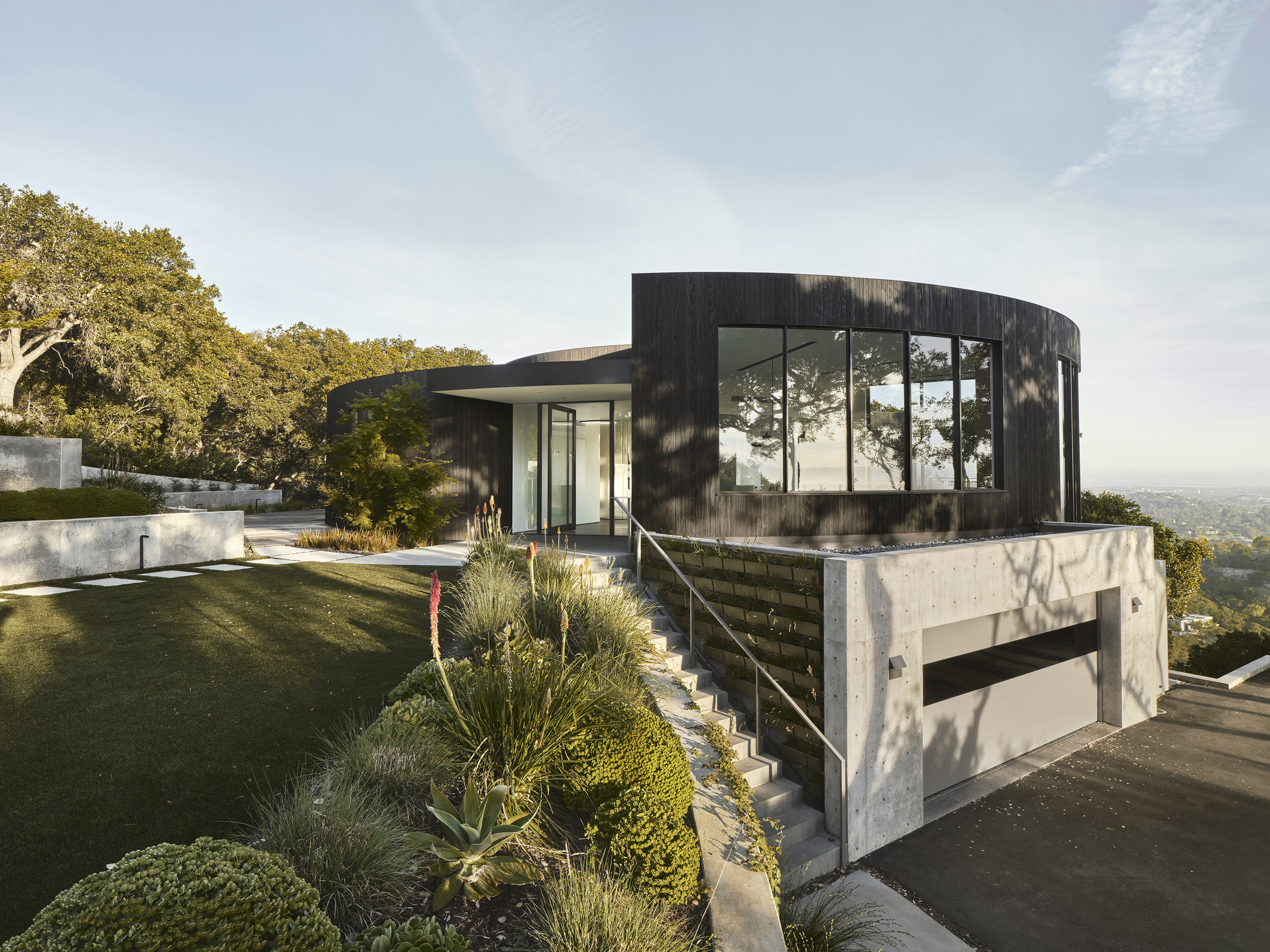
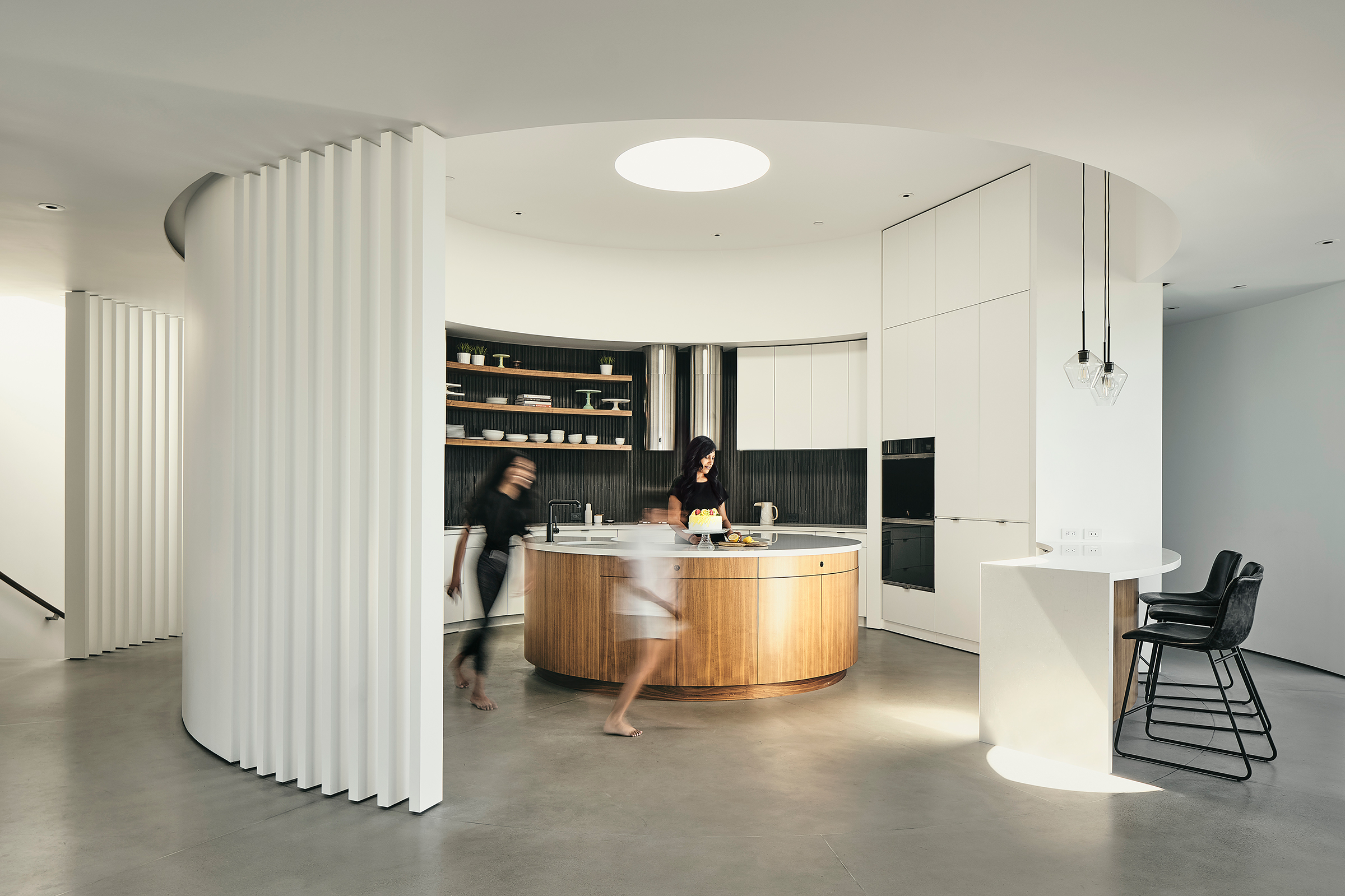
Round House by Feldman Architecture, Los Altos Hills, CA, United States. Photographs by Adam Rouse
In the verdant hills of Los Altos, the Round House is a unique and captivating structure that immediately catches the eye. Designed by Feldman Architecture, the Round House is a quirky circular house that is one of a few similarly shaped homes built in California in the 60s. Initially planned as a modest remodel, the clients soon realized the inefficiencies of their new home, which led to a significant renovation to modernize and open up the design. The Round House is perched atop a precipitous site, boasting 180-degree views and a deck that runs around its perimeter.
The interior design is minimalistic, allowing the colorful and dramatic views to speak for themselves. The Japanese-style charred wood siding, seamless concrete floors, crisp curved white walls, and carefully arranged pie-shaped rooms all contribute to the Round House’s unique and eye-catching design. Despite the challenges of its circular form, the Round House’s design is both functional and beautiful, resulting in an architectural masterpiece that stands out in its environment.
Architizer's new image-heavy daily newsletter, The Plug, is easy on the eyes, giving readers a quick jolt of inspiration to supercharge their days. Plug in to the latest design discussions by subscribing.





